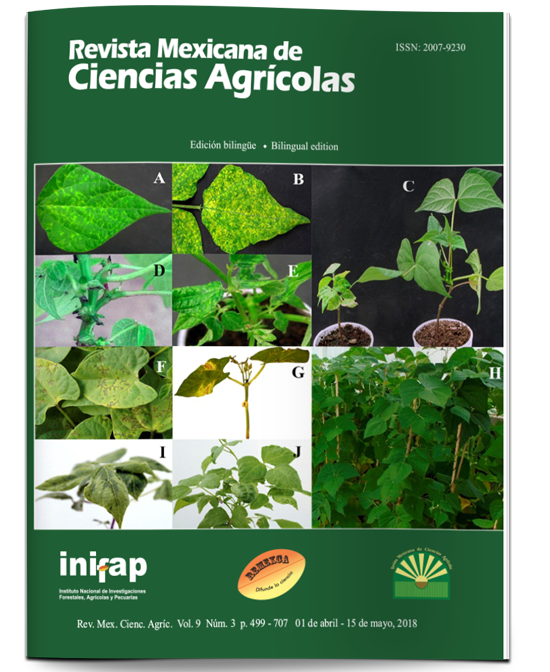Method to evaluate amaranth grain trapping
DOI:
https://doi.org/10.29312/remexca.v9i3.1224Keywords:
conditioning, grain moisture, expansion volumeAbstract
To define a procedure to evaluate amaranth grain expansion, three experiments were established. The first, to optimize the method of determination of humidity in grain in drying oven. The second to define the feasibility of modifying the moisture content to 12, 14 and 16%, due to the effect of water quantity and conditioning time. The third was to determine the volume of grain expansion by sample size (15 and 30 g) and humidity (10, 12, 14 and 16%). The treatment that worked best for the determination of grain moisture was 2 g of sample, 2 h of drying at 130 °C. It is possible to modify and adjust the grain moisture content by adding water. No effect on the moisture content was observed for the different conditioning times. The moisture content with which the highest trapping volume was obtained was 12 and 14%. There were no significant differences in the volume of grain trapping in samples of 15 and 30 g.
Downloads
Published
How to Cite
Issue
Section
License
The authors who publish in Revista Mexicana de Ciencias Agrícolas accept the following conditions:
In accordance with copyright laws, Revista Mexicana de Ciencias Agrícolas recognizes and respects the authors’ moral right and ownership of property rights which will be transferred to the journal for dissemination in open access. Invariably, all the authors have to sign a letter of transfer of property rights and of originality of the article to Instituto Nacional de Investigaciones Forestales, Agrícolas y Pecuarias (INIFAP) [National Institute of Forestry, Agricultural and Livestock Research]. The author(s) must pay a fee for the reception of articles before proceeding to editorial review.
All the texts published by Revista Mexicana de Ciencias Agrícolas —with no exception— are distributed under a Creative Commons License Attribution-NonCommercial 4.0 International (CC BY-NC 4.0), which allows third parties to use the publication as long as the work’s authorship and its first publication in this journal are mentioned.
The author(s) can enter into independent and additional contractual agreements for the nonexclusive distribution of the version of the article published in Revista Mexicana de Ciencias Agrícolas (for example include it into an institutional repository or publish it in a book) as long as it is clearly and explicitly indicated that the work was published for the first time in Revista Mexicana de Ciencias Agrícolas.
For all the above, the authors shall send the Letter-transfer of Property Rights for the first publication duly filled in and signed by the author(s). This form must be sent as a PDF file to: revista_atm@yahoo.com.mx; cienciasagricola@inifap.gob.mx; remexca2017@gmail.
This work is licensed under a Creative Commons Attribution-Noncommercial 4.0 International license.



